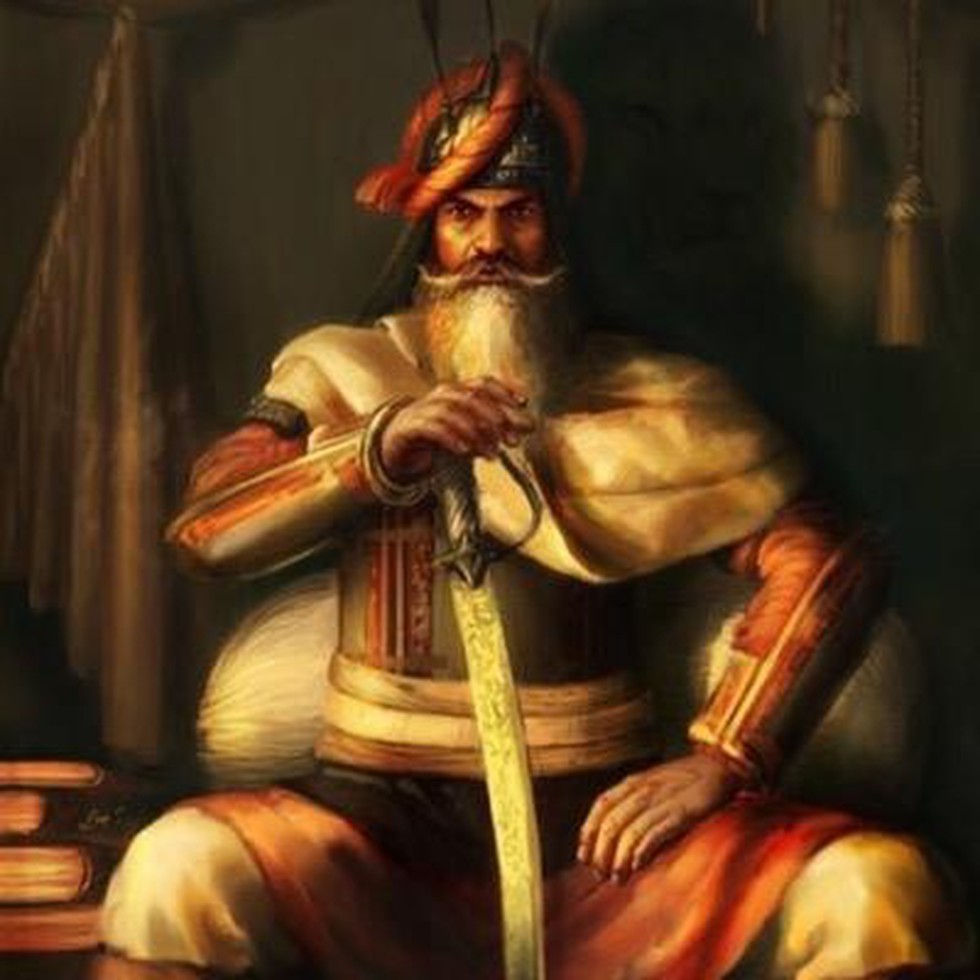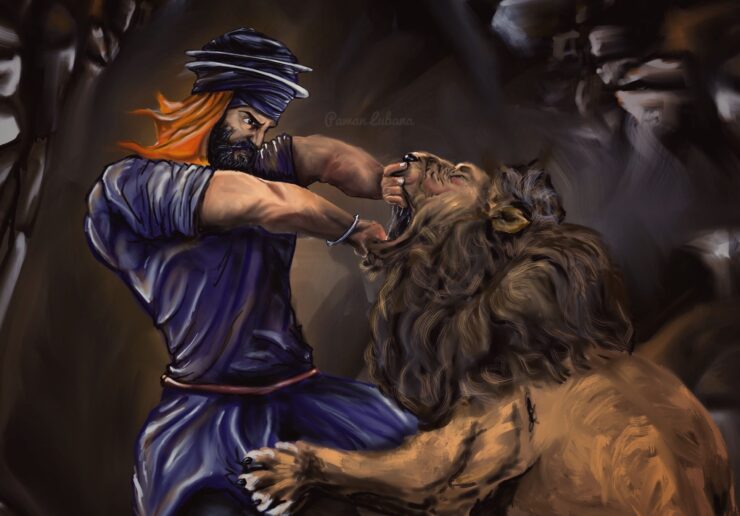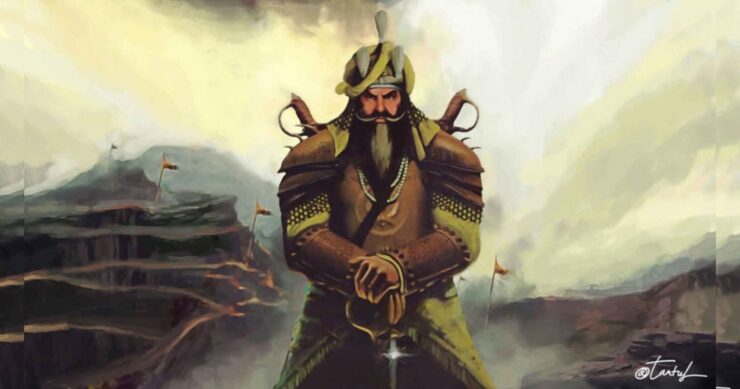
Hari Singh Nalwa (1791–1837) was one of the top generals of the renowned Sikh King Maharaj Ranjit Singh. As the Commander-in-Chief of the Sikh Khalsa Fauj, the army of the Sikh Empire, Nalwa was known for his role in the conquests of Kasur, Sialkot, Attock, Multan, Kashmir, Peshawar and Jamrud. He played a key role in expanding the frontiers of the Sikh Empire to beyond the Indus River right up to the mouth of the Khyber Pass. At the time of his death, the western boundary of the empire was Jamrud.
Nalwa served as the governor of Kashmir, Peshawar and Hazara. and set up a mint on behalf of the Sikh Empire to facilitate revenue collection in Kashmir and Peshawar.
Nalwa was born in Gujranwala, in the Majha region of Punjab to Dharam Kaur and Gurdial Singh Uppal, in a Khatri family of the Uppal tribe. After his father died in 1798, he was raised by his mother. In 1801, at the age of ten, he took Amrit Sanchar and was initiated as a Khalsa. At the age of 12, he began to manage his father’s estate and took up horse riding. In 1804, at the age of 14, his mother sent him to the court of Maharaj Ranjit Singh to resolve a property dispute.
The king decided the arbitration in his favour because of his background and aptitude. Hari Singh had explained that his father and grandfather had served under Maha Singh and Charat Singh, the Maharaja’s ancestors, and demonstrated his skills as a horseman and musketeer. He was given a position at the court as a personal attendant. Hari Singh had two wives, as customary at the time, Raj Kaur from Rawalpindi and Desan Kaur. He had four sons and two daughters.

During a hunt in 1804, a tiger attacked him and also killed his horse. His fellow hunters tried to protect him but he refused their offers and reportedly killed the tiger by himself barehanded by tearing the tiger apart from its mouth, thus earning the name Baghmar (Tiger-killer). Though not known whether he was already in the military, he was commissioned as Sardar, commanding 800 horses and footmen, in that year.
20 major battles
He participated and commanded the Sikh Army in 20 major battles. The victories in battles that were achieved over the Afghans, were a favourite topic of conversation for Ranjit Singh. He was to immortalise these by ordering a shawl from Kashmir at the record price of Rs 5000, in which were depicted the scenes of the battles fought with them. Following the death of Hari Singh Nalwa, no further conquests were made in this direction. The Khyber Pass continued as the Sikh frontier till the annexation of Punjab by the British.
Hari Singh’s administrative rule covered one-third of the Sikh Empire. He served as the Governor of Kashmir (1820–21), Greater Hazara (1822–1837) and was twice appointed the Governor of Peshawar (1834-5 and 1836-till his death). He worked closely with the second-in-command of the Khalsa Army, the Hindu Raja Mahan Singh Mirpuri, on many administrative affairs.
In his private capacity, Hari Singh Nalwa was required to administer his vast jagir spread all over the kingdom. He was sent to the most troublesome spots of the Sikh empire in order to “create a tradition of vigorous and efficient administration”.

Nalwa was also a builder. At least 56 buildings were attributed to him, which included forts, ramparts, towers, gurdwaras, tanks, samadhis, temples, mosques, towns, havelis, sarais and gardens. He built the fortified town of Haripur in 1822. This was the first planned town in the region, with a superb water distribution system. His very strong fort of Harkishengarh, situated in the valley at the foothill of mountains, had four gates. It was surrounded by a wall, four yards thick and 16 yards high. Nalwa’s presence brought such a feeling of security to the region that when Hügel visited Haripur in 1835-6, he found the town humming with activity.
Sikh forts
He built all the main Sikh forts in the trans-Indus region of Khyber Pakhtunkhwa — Jehangira and Nowshera on the left and right bank respectively of the river Kabul, Sumergarh (or Bala Hisar Fort in the city of Peshawar), for the Sikh Kingdom. In addition, he laid the foundation for the fort of Fatehgarh, at Jamrud (Jamrud Fort). He reinforced Akbar’s Attock fort situated on the left bank of the river Indus by building very high bastions at each of the gates. He also built the fort of Uri in Kashmir.
A religious man, Nalwa built Gurdwara Panja Sahib in the town of Hassan Abdal, south-west of Haripur and north-west of Rawalpindi, to commemorate Guru Nanak’s journey through that region. He had donated the gold required to cover the dome of the Akal Takht within the Harmandir Sahib complex in Amritsar.
– The writer is a senior journalist and media consultant. The views expressed are of the writer and do not necessarily reflect the views of Raksha Anirveda








